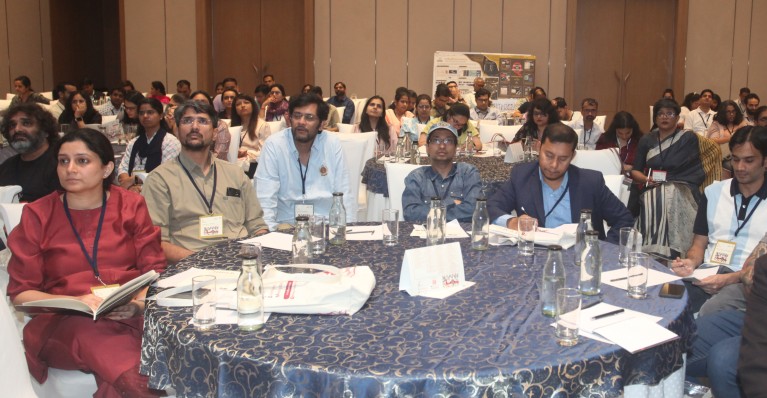
Indian life scientists attending a peer group meeting in March 2024. Credit: IndiasBioscience
India is hoping to revamp its research and development sector with the implementation of the Anusandhan National Research Foundation (ANRF). The foundation will build policy frameworks to support research and innovation and introduce regulatory processes for collaborations and partnership across academia, industry and government. Proposed as a 50000-crore (including contributions from the private sector) apex body for Research & Development (R&D), the ANRF will provide strategic direction in the fields of science, technology, engineering and mathematics.
Fundamental research in the life sciences at Indian research institutes and universities includes the fields of biology, health and agriculture, among others. In spite of an expanding number of institutes and universities, life scientists in India represent a relatively small community, estimated at around 5000 PhD researchers, postdoctoral fellows and faculty (independent scientists). Considerations inherent to the practice of life science research, such as the need for capital-intensive infrastructure, large-scale facilities and an array of materials and reagents, are further compounded by country-specific challenges such as the nature of science management and the small footprint of life scientists. So, it is important to understand the needs and challenges of the biological sciences in India, which could help identify potential interventions or solutions for ANRF frameworks.
A recent survey of 374 independent life science researchers in India concluded that the community faces a key challenge in getting professional support, and called for a need to revamp science administrative practices to better support scientific work. The survey spread across institutions, universities, organisations and colleges got responses from early career life scientists aged between 36 and 45 years.
While 75% of life science faculty reported getting PhD training in India, most of the respondents left the country for postdoctoral training. This underscores the glaring reality of lack of a robust postdoctoral ecosystem. While the reasons for this are manifold, an expansion of the number of postdoctoral positions in the life sciences and better remunerative support, could be valuable interventions. Another observation was the lack of mentorship for early-career life scientists in setting up a laboratory, personnel management or obtaining research funding. This is surprising, given the small critical mass of life science researchers in India. But given it is a small, interconnected community, mentoring can be easily done through digital platforms and structured databases.
On the administrative front, respondents hoped for improved hiring processes, funds disbursal, and ease of collaborations. The application and hiring process take up to a year, with a median time of 6.5 months. Those surveyed also reported a lack of post-hiring institutional orientation or induction. 85% of respondents wanted better administrative processes, support from grants management offices, and 70% reported dissatisfaction with the grants and funding system in India. Administrative challenges to collaborations included establishing institute-level MoUs, slow official sanctioning, FCRA regulations, and identifying collaborators. The development of a structured database for life science researchers could facilitate the latter.
Importantly, as ANRF builds a set of contemporary policies and frameworks, inputs like these could be useful in accurately mapping India's future needs of science and research.
